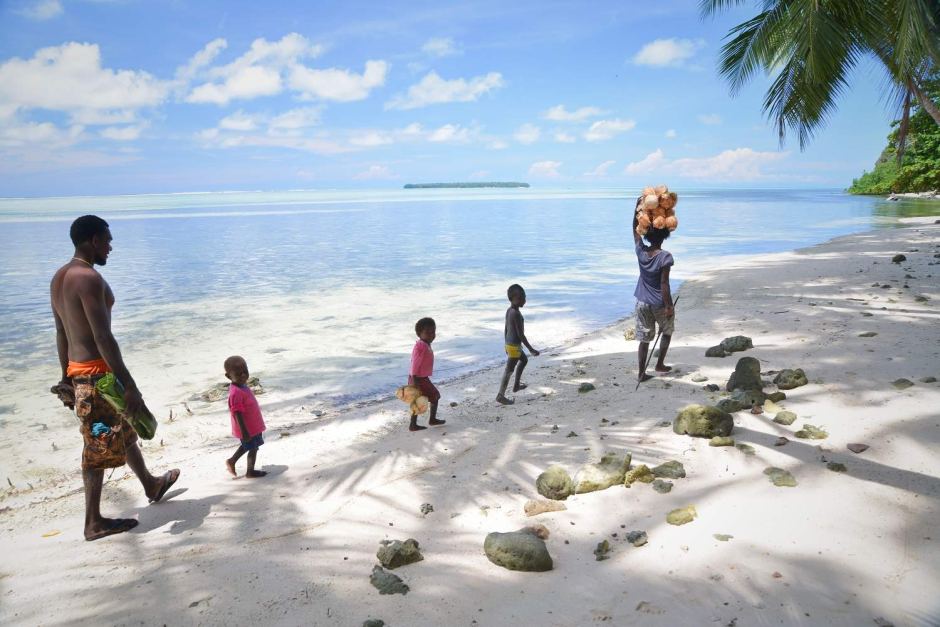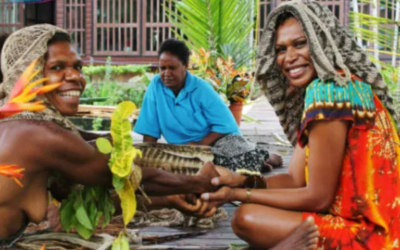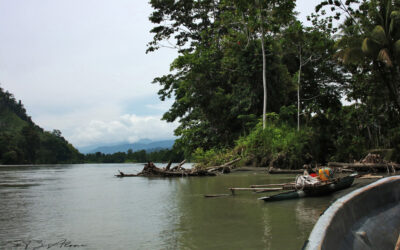
Image source: click here
Climate change is an extremely serious issue affecting our planet and it has caused global sea levels to rise. Rising sea levels especially threaten lowland communities, coasts and islands- Papua New Guinea being one of them.
Rising sea level facts and statistics globally and in Papua New Guinea:
- Increasing ocean temperature and atmospheric temperature cause thermal expansion of ocean water and melting of glaciers and ice caps, thereby causing a rise in sea level. (“Climate Change in the Pacific: Scientific Assessment and New Research Volume 2- Country Reports” — Chapter 11: Papua New Guinea)
- The United Nation’s Intergovernmental Panel on Climate Change (IPCC) predicts global mean sea levels will rise between 0.95 feet and 3.61 feet by the end of the century.
- The rise in sea level around Papua New Guinea measured by satellite altimeters since 1993 is approximately 7mm per year, larger than the global average which is approximately 3.2 mm per year (+/- 0.4mm) (“Climate Change in the Pacific: Scientific Assessment and New Research Volume 2- Country Reports” — Chapter 11: Papua New Guinea).
- Highest tides measured by gauges at Lombrum (Manus Province) and Rabaul (East New Britain Province) in Papua New Guinea occur around the solstice times of the year and are significantly higher during La Niña years and are lower during El Niño years (“Climate Change in the Pacific: Scientific Assessment and New Research Volume 2- Country Reports” — Chapter 11: Papua New Guinea)., p. 177).
The impact and effects of rising sea levels pose a serious threat to the global economy. Global and local effects of rising sea levels in Papua New Guinea include:
- Habitat contraction
- Loss of biodiversity
- Loss of wetlands
- Migration (inland and out of nation/ island)
- Overpopulation due to internal migration
- Squatter settlements
- Loss of drinking water resources (Drinking water contamination)
- Threatened agricultural production
- Changes to fisheries
- Changes to forestry
- School shut downs
- Threatened local and Indigenous communities/ tribes (acculturation, language loss, cultural practices etc.)
- Impact on vector, water and airborne diseases such as Malaria
(Sources: IPCC Chapter 4, Lipset 2017, Lipset 2013, Financial Times)

Image source: click here
Rising Sea Level- Impact on Papua New Guinea Population
The land Papua New Guinea peoples’ ancestors and communities have used for years is being washed away from underneath them. For over twenty years islanders on the Carteret Islands in Papua New Guinea have been fighting to mitigate rising sea levels and protect their communities by building seawalls and planting mangroves, although this has been ineffective (Nazer 2017). The Carteret Islanders have been named some of the world’s first environmental refugees, as they try to establish new settlements on Bougainville Island (Nazer 2017). Panachais village located in New Ireland Province and the Tigak islands are also vulnerable to rising sea levels and high tides (Likas 2018).
Stories from these communities indicate the sea is quite literally eating their home, their “place”. It is important to note that “place” may be understood as a location which is the center of action, intention and meaning for a person or group of people (McIlwriath & Cormier, 2016; Lipset 2017). According to David Lipset (2017), the concept of “place” in the Anthropocene is often the site of tragedy, loss of meaning and darkness. Lipset (2017) explains this idea by drawing on experiences of the Murik people living at the mouth of the Sepik River in Papua New Guinea. This population was severely affected by rising sea levels between 2007 and 2014 as their source of food – fishing areas and coconut supply were limited and wiped out. The Murik population has had to use their remaining social and cultural capital to make a living and resettle their communities elsewhere (Lipset 2017). Similarly, a Panachais village resident explained how rising sea levels have forced them to move over the years (Likas 2018). Their home used to be located right by the sea in the 1980s. In 2018, the resident’s house was then located on a swampy piece of land they packed with garbage debris to become sturdy enough to withstand a structure (Likas 2018).
The islanders on Carteret islands were especially concerned about the future of their community, as there is little land left to sustain future generations (Nazer 2017). The education of Carteret school children is also being affected. A teacher on the island expressed the need to finish the curriculum but also how they must stop classes by midday as the children cannot concentrate due to hunger caused by a limited and diminished food supply (Nazer 2017).
How can we address the problem?
As villagers and environmental refugees deal with their loss of “place” and express fears and concerns about resettlement and adaptation, local agencies, NGOs and the government may intervene to provide affected populations with resources. As rising sea levels are an unavoidable concern for the near future, it is also necessary to plan for the impact and scope of rising sea levels. Information and communications technology and LiDar are useful for mapping sea level rise and flooding to better inform communities and land development projects. Providing relief for communities affected including housing, food, shelter and water is also necessary and a reasonable goal for many charitable organizations. As the Morobe Development Foundation continues to address climate change related issues, providing aid to those affected by rising sea levels will become increasingly more important in Papua New Guinea.
References
The New State of Nature: Rising Sea-levels, Climate Justice, and Community-based Adaptation in Papua New Guinea (2003-2011)
Lipset, David. Conservation and Society; Bangalore Vol. 11, Iss. 2, (Apr 2013): 144-158. DOI:10.4103/0972-4923.115726
Lipset, David. “Place in the Anthropocene.” HAU: Journal of Ethnographic Theory, November 28, 2017. https://doi.org/10.14318/hau4.3.014.
“Chapter 4: Sea Level Rise and Implications for Low-Lying Islands, Coasts and Communities — Special Report on the Ocean and Cryosphere in a Changing Climate.” Accessed August 18, 2020. https://www.ipcc.ch/srocc/chapter/chapter-4-sea-level-rise-and-implications-for-low-lying-islands-coasts-and-communities/.
Likas, Roline, October 2, and 2018. “Coastal Villagers in Papua New Guinea Struggle to Confront Climate Change.” InfoPacific (blog). Accessed August 18, 2020. https://infopacific.org/2018/10/coastal-villagers-in-papua-new-guinea-struggle-to-confront-climate-change/.
UNICEF East Asia & Pacific. “The Last Islanders: Rising Sea Levels in Papua New Guinea,” March 22, 2017. https://blogs.unicef.org/east-asia-pacific/the-last-islanders/.
September 25, and 2019 Rob Moore. “IPCC Report: Sea Level Rise Is a Present and Future Danger.” NRDC. Accessed August 18, 2020. https://www.nrdc.org/experts/rob-moore/new-ipcc-report-sea-level-rise-challenges-are-growing.
Gross, Anna. “Rise in Coastal Flooding Poses Threat to Global Economy,” July 30, 2020. https://www.ft.com/content/6f8fe212-b2e6-49f4-b6b5-c8143ac5392f.



0 Comments